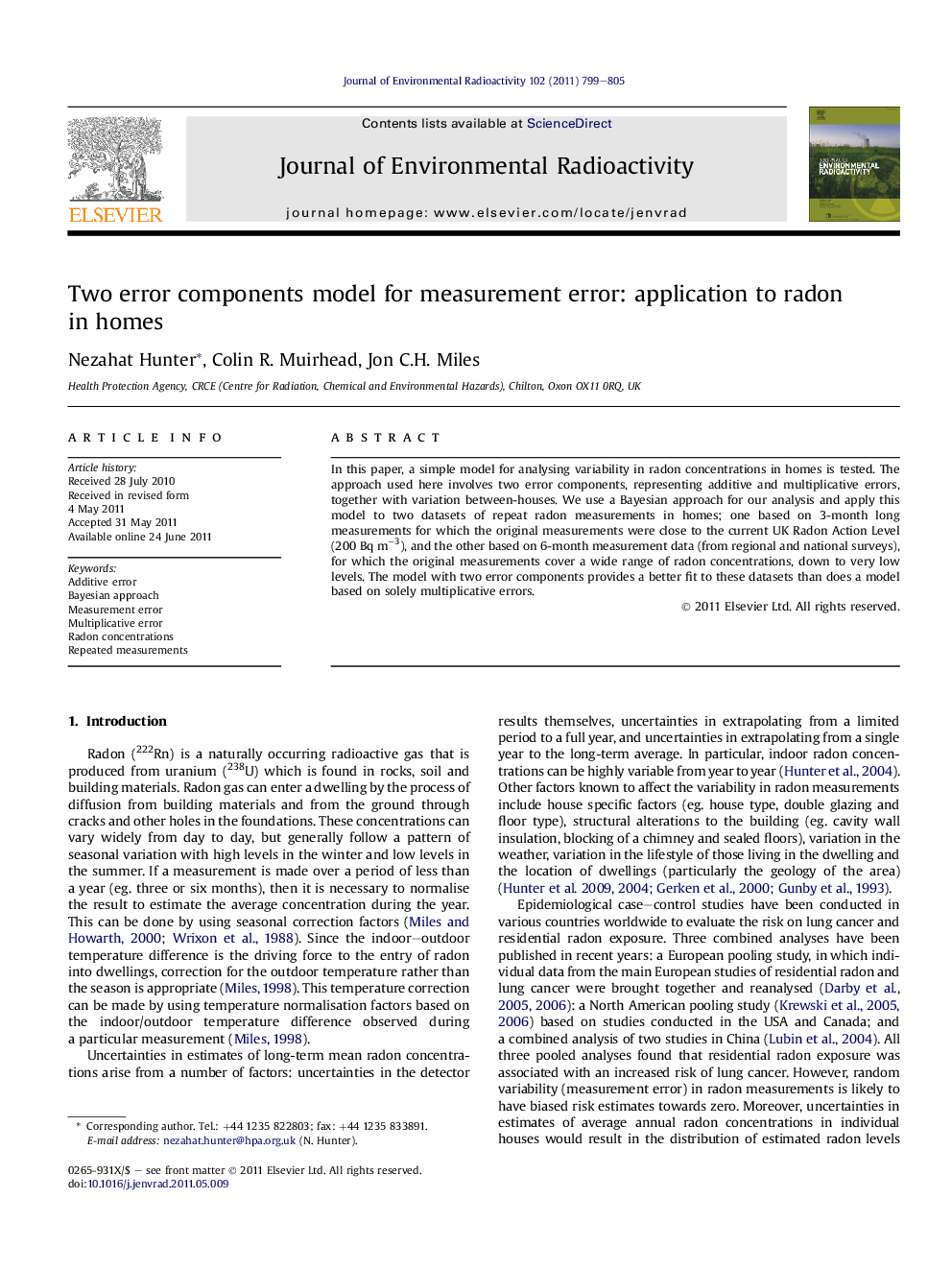| Article ID | Journal | Published Year | Pages | File Type |
|---|---|---|---|---|
| 1738584 | Journal of Environmental Radioactivity | 2011 | 7 Pages |
In this paper, a simple model for analysing variability in radon concentrations in homes is tested. The approach used here involves two error components, representing additive and multiplicative errors, together with variation between-houses. We use a Bayesian approach for our analysis and apply this model to two datasets of repeat radon measurements in homes; one based on 3-month long measurements for which the original measurements were close to the current UK Radon Action Level (200 Bq m−3), and the other based on 6-month measurement data (from regional and national surveys), for which the original measurements cover a wide range of radon concentrations, down to very low levels. The model with two error components provides a better fit to these datasets than does a model based on solely multiplicative errors.
► A new multilevel model for analysing variability in radon measurements in homes is tested. ► The model includes additive and multiplicative errors and with variation between homes. ► The model with two error components provides a better fit than a model based on only multiplicative error. ► The model can also be used for other environmental data where the variation at low levels can't be modelled multiplicative error only.
